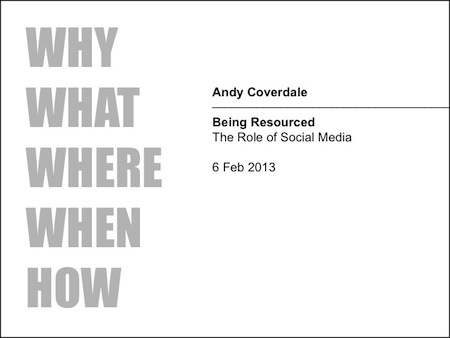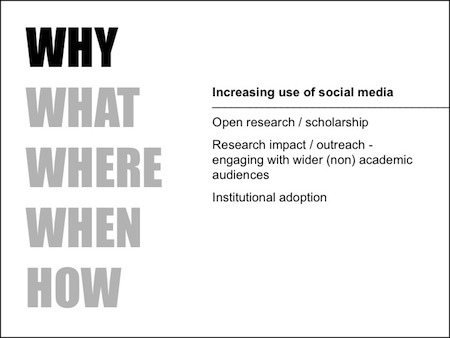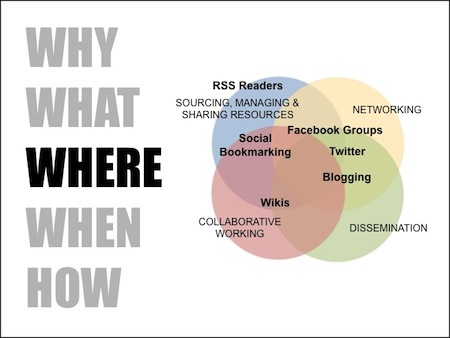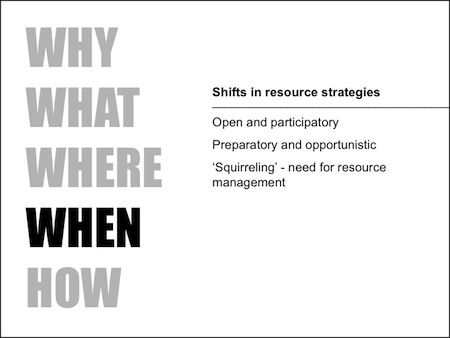What are the most useful criteria for categorising social media? What characteristics help define or distinguish specific tools or platforms? What, for example, is most typical or unique about a blog? The reverse chronological ordering of posts? The ability to comment? Or something more related to its social or cultural significance? In other words, what is it that essentially determines the ‘blogness’ of a blog? But then, how does a WordPress blog differ from a Blogger blog? How do we distinguish a blog from a tumblog or a microblog?
If it quacks like a duck, then it probably is a duck. But the delineations between social media are increasingly blurry. This is partly down to the mixed and often interchangeable ontological approaches we take in defining social media – by platform, brand, modality, community etc. In addition, within these often reside multiple components or features that may be common to several social media.
Therefore, we might choose to define or categorise social media by how and why we are using them. Some in the educational technology field have adopted the idea of affordances within user-centred design paradigms in an attempt to correlate specific tools and features with specific purposes and activities. But as Martin Oliver (2005) suggests, interpretations of Gibson’s original notion of affordance have been problematic (and often uncritical), describing one attempt as a “conglomeration of claims about perceptions, actions and characteristics” (p.409).
Many research projects in the ed-tech field also tend to focus on a specific platform (tool etc.). This is understandable, given that they may be oriented towards supporting its adoption, development and/or evaluation in a particular educational context. In addition, tight budgets or timescales can limit the scope of research to single platforms. But in my own PhD research with doctoral students, where participants were actively using a range of social media, I was keen on challenging this platform-specificity. Through reviewing the literature and conducting my pilot study, I came to recognise a number of key factors that indicated researching academic uses of the social web may be best facilitated by examining multiple forms of social media:
- Underlying technologies and related processes (e.g. aggregation and tagging) provide effective means of interconnectivity between different social media
- The adoption and use of social media is transient in nature, and subject to changes in technologies and design, and to social and cultural trends
- The communities and networks in which individuals engage through social media encompass multiple, overlapping professional and social contexts
Crucially, adapting a holistic approach in this way supports attempts at framing the categorisation of social media within dynamic and contextualised sociocultural practices. Recalling Latour’s notion of ‘assemblages,’ we can think of any digital artefact (such as this blog post) as incorporating a history of multiple sociotechnical and cultural arrangements, processes and influences. In choosing to use Activity Theory in my analysis, I attempted to unpick these by constructing multiple and interconnected activity systems oriented towards key doctoral practices.
But in developing such activity systems, one has to attempt to delineate the social and cultural parameters that situate the practices under investigation. I recognised that my participants’ digitally mediated communities and networks did not only overlap, as suggested above, but they were also characterised by different levels and types of interaction, participation and audience. In addition, whilst specific social media (especially recognised ‘brands’ like Twitter and Facebook) have their own cultural identities, these exist and are constantly reconstructed and influential in the wider cultural norms of web 2.0 generally. Often in my study, key catalysts for change in my participants’ social media practice (manifest as ‘contradictions’ in the activity systems) arose through a coupling of:
- Conflicts between the platform-specific and general web 2.0 cultures and the (often deeply embedded) cultural norms of academia
- The participants’ need to negotiate the professional, social and cultural landscapes of multiple practice contexts
During the early stages of analysis, I was drawn to the genre studies literature, particularly key texts (e.g. Berkenkotter & Huckin, 1993) which represent a shift from literary and formalist genre traditions to more sociocultural and dialogical perspectives. These recognise the complexity, spontaneity and interconnectedness of genres (Spinuzzi & Zachry, 2000), and support studies which are inclusive of, and focussed on, the social interactions, activities and practices in which genres are embedded. Given the similarities with Activity Theory, I began to use genre, not as a specific analytical unit, but rather to inform my activity systems development. (For activity theorists out there, identifying these genres presented me with a way of addressing the dual conceptualisation of the ‘Tool’ component of the activity systems, that is: (i) in conceptualising the materiality of Vygotskyian mediation, and (ii) in constituting, or at least contributing to, the development of cultural tools.)
In time, I became aware of my participants’ conscious and purposeful refinement of what could be seen as emerging social media genres, and with it, their awareness of the representational and performative roles they play – akin to what Berkenkotter and Huckin (1995) describe as ‘genre knowledge.’ However, I found that these genres were challenging existing conventions of genre definition. For example, I found the notion of blogging as a specific genre of writing (or if you prefer, the blog post as a specific genre of text) ineffective in addressing the nuances of my participants’ blogging practices. Multiple and distinct forms of writing styles, formats and motivations were emerging, often in context with other, non-blogging texts, and occasionally transcending multiple platforms. I for one, have advocated single-author academic blogs as personal spaces for freedom of expression and experimentation. Compare for example, the length, format, modality and style of this blog post with this one. Further, whilst blogging in particular is still dominated by text, social media generally are becoming increasingly multimodal and multipurpose, and as such, increasingly disruptive in terms of genre definition. (Read the account of one of my participant’s ‘scrapbook’ style blogging in my last post.) As Clay Spinuzzi suggests, social media genres are becoming increasingly multiple and complex in relation to frequency, context, social interactions and audiences. This would suggest that in any analysis of this kind, we are looking at multiple and hard-to-define, interrelated and potentially conflicting sets of genres.
Why, one might ask, is this at all important beyond these predominantly theoretical and analytical concerns? Partly I think, because the way social media genres are defined and socially constructed influences our perceptions of how we use (or ought to use) these digital tools and platforms in various contexts, which within academic environments often become manifest in the form of best practices, which, as I have discussed previously, are themselves culturally loaded. This social construction often draws from popular discourses on the transformative, radical and disruptive potential of social media, in which seemingly new technological trends often represent a cultural (re)branding of established practices. These can become powerful cultural artefacts in the marketing of technological development within educational and research contexts, as is evident in the institutional leveraging of social media towards impact and outreach agendas, and in the commercial redefining of MOOCs.
Academics have generally used genres to reinforce the values and belief systems of the (inter-)disciplinary cultures in which they participate. For doctoral students, increased familiarity and engagement with established academic genres is seen as a crucial part of their learning trajectory and socialisation within the scholarly community. The emergent genres that are thrown up by participating in social media can challenge, augment and subvert these established genres and their role in reifying academic practice. In negotiating these new spaces of contestation, genre knowledge – or as I see it, the ability to recognise and contribute to the social construction of these genres – becomes an increasingly important digital literacy.
References
Berkenkotter, C., & Huckin, T. N. (1993). Rethinking genre from a sociocultural perspective. Written Communication, 10(4), 475-509.
Berkenkotter, C., & Huckin, T. N. (1995). Genre knowledge in disciplinary communication: cognition/culture/power. Hillsdale, NJ: Lawrence Erlbaum Associates.
Oliver, M. (2005). The problem with affordance. E-Learning, 2(4), 402-413.
Spinuzzi, C., & Zachry, M. (2000). Genre ecologies: An open-system approach to understanding and constructing documentation. ACM Journal of Computer Documentation, 24(3), 169-181.








